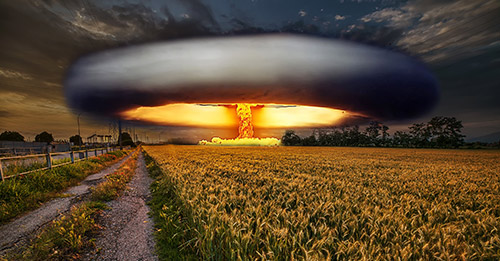Should such an incident occur, the EU would not only be faced with the potential environmental consequences, but also – given the recent introduction of visa-free travel – a large-scale exodus of Ukrainians out of contaminated areas.
Let’s start by taking a brief tour of the Ukrainian nuclear industry:
Ukraine currently has four operating nuclear power plants: the Zaporizhia (the largest in Europe, with six reactors and a combined power output of 6,000 MW), the Rivne (four reactors and a combined power output of 2,880 MW), the Khmelnitskiy (two reactors and a combined power output of 2,000 MW), and the South Ukraine (three reactors and a combined power output of 3,000 MW):
The Chernobyl plant with its four reactors was finally shut down for good in 2000.
Of the 15 nuclear reactors currently operating in Ukraine, 12 were brought online during the Soviet era, prior to 1990. All of them rely on the classic type of VVER nuclear reactors that were designed during the 1960s and 1970s at the Kurchatov Institute in Moscow. Those reactors should have a maximum life expectancy of 30 years. But as of today, 10 of the 15 reactors operating in Ukraine have already outlasted their expected service life.
…click on the above link to read the rest of the article…















